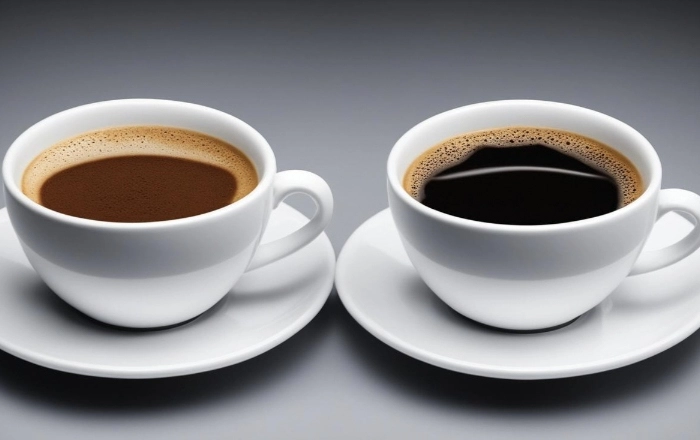Espresso and regular coffee both come from the same coffee beans. Yet, espresso often costs more. This price difference puzzles many coffee lovers. The reasons involve equipment, skill, and quality. Espresso is a concentrated coffee drink. It uses high pressure to force hot water through finely-ground beans. Regular coffee, like drip or filter coffee, uses gravity to pull water through coarser grounds. This fundamental difference affects price.
The Skill Requirement
Making good espresso requires training. Baristas spend months learning proper techniques. They must master several skills:
- Grinding beans to the perfect fineness
- Tamping grounds with consistent pressure
- Timing the shot precisely
- Adjusting the machine for different beans
A skilled barista makes better espresso. Coffee shops pay for this expertise. Regular coffee needs less skill to brew well. Anyone can make decent drip coffee with minimal training.
Coffee Bean Quality
Espresso usually uses higher-quality beans. The intense brewing method highlights flavors. Any defects in the beans become obvious. Many coffee shops use special espresso blends. These often contain premium Arabica beans. Regular coffee can use lower-grade beans. The brewing process hides some flaws. Many commercial drip coffees use Robusta beans. These cost less but taste harsher. The bean quality difference adds to espresso’s price.
Portion Size Matters
Espresso comes in small servings. A single shot is about 1 ounce (30 ml). A typical coffee is 8-12 ounces (240-350 ml). At first glance, espresso seems much more expensive per ounce. But espresso contains more coffee solids. The high pressure extracts more from the grounds. You get more coffee flavor in each sip. The perceived value is higher despite the small size.
Waste and Testing
Coffee shops waste more coffee when making espresso. Baristas must test shots throughout the day. They adjust grind size as beans age. This “dialing in” process wastes some coffee. Each test shot costs money. Drip coffee has less waste. Once set up, the machine makes consistent coffee. Staff rarely need to test or adjust during service. The lower waste keeps costs down.
Serving Style Adds Cost
Espresso often comes with more service. Baristas may create latte art in milk drinks. They take time to prepare each drink individually. This personalized service adds value. Regular coffee often comes from a self-serve station. Customers pour their own cups. The reduced labor keeps prices lower. Even when staff pour it, the process is quicker than making espresso.
The Roasting Process
Espresso beans often get special roasting. They may roast longer to develop richer flavors. Some roasters use small batches for better control. This artisanal approach costs more than mass-produced coffee. Commercial coffee roasts in huge batches. The process is highly automated. Large-scale production brings down costs. These savings appear in the final cup price.
Grinding Precision
Espresso needs very fine, consistent grounds. The grinder must produce uniform particles. Any variation affects extraction. Good espresso grinders cost 500−2,000. They have precise burrs that stay sharp. Regular coffee grinders are cheaper. They don’t need such fine adjustments. A $100 grinder works fine for drip coffee. The cost difference affects overall pricing.
Water Quality Importance
Espresso machines need careful water treatment. Hard water damages expensive equipment. Many shops install filtration systems. These remove minerals that cause scale buildup. Drip coffee makers handle water quality issues better. They cost less to replace if damaged. Some shops use filtered water for all coffee. But it’s more critical for espresso machines.
Market Perception
People expect to pay more for espresso drinks. Coffee shops know this and price accordingly. The specialty coffee image justifies higher costs. Customers associate espresso with premium quality. Regular coffee has a different image. Many see it as an everyday drink. Shops keep prices low to attract customers. Once inside, customers often buy higher-margin espresso drinks.
The Time Factor
Espresso takes more time per cup. A barista might make 60 seconds per drink. This includes grinding, tamping, pulling the shot, and possibly steaming milk. During busy times, shops need more staff to keep up. A drip coffee maker produces many cups quickly. One worker can serve dozens of customers per hour. The higher labor efficiency reduces costs per cup.
Maintenance and Cleaning
Espresso machines need daily cleaning. They have many parts that require disassembly. Staff must backflush the group heads and clean the steam wand. This maintenance takes time and skill. Drip coffee makers need less frequent cleaning. Many shops clean them once a day. The process is simpler and faster. The reduced maintenance time saves money.
The Milk Factor
Many espresso drinks include milk. Latte, cappuccino, and flat white all use milk. Quality shops use fresh, often organic milk. This adds to the drink’s cost. Milk steaming also requires skill and time. Regular coffee often comes black. Customers add milk or cream themselves. The shop doesn’t bear this cost. Even when added by staff, it’s less than espresso drinks.
Cup and Serving Costs
Espresso uses special cups. They’re often thick porcelain that retains heat. These cost more than standard paper cups. Many shops invest in nice presentation for espresso drinks. Regular coffee often goes in disposable cups. Even when using ceramic, the cups are simpler. The lower serving costs help keep prices down.
Conclusion
When you add up all these factors, espresso’s higher price makes sense. The equipment, skills, and ingredients all cost more. While the price per ounce seems high, the actual cost difference is reasonable. Next time you buy espresso, remember what goes into it. You’re paying for quality, skill, and experience. That rich, concentrated flavor comes at a price – but many coffee lovers think it’s worth it.
Related topics:
Why Is McDonald’s Coffee So Good?
Why We Drink Coffee Before Workout
What Is the 90 Minute Coffee Rule?


